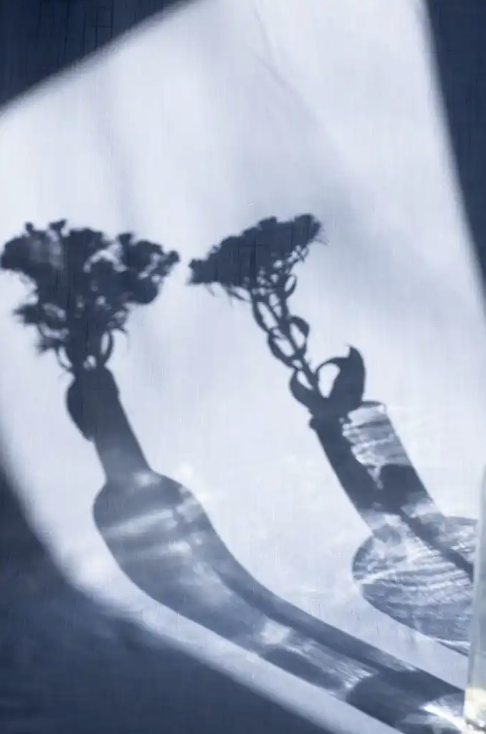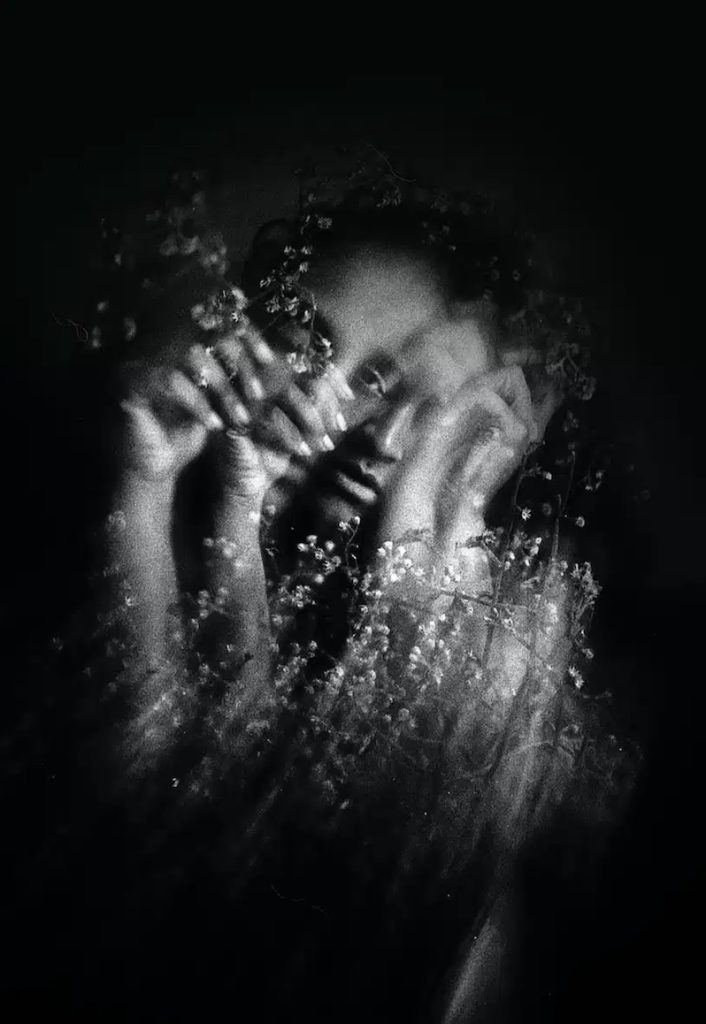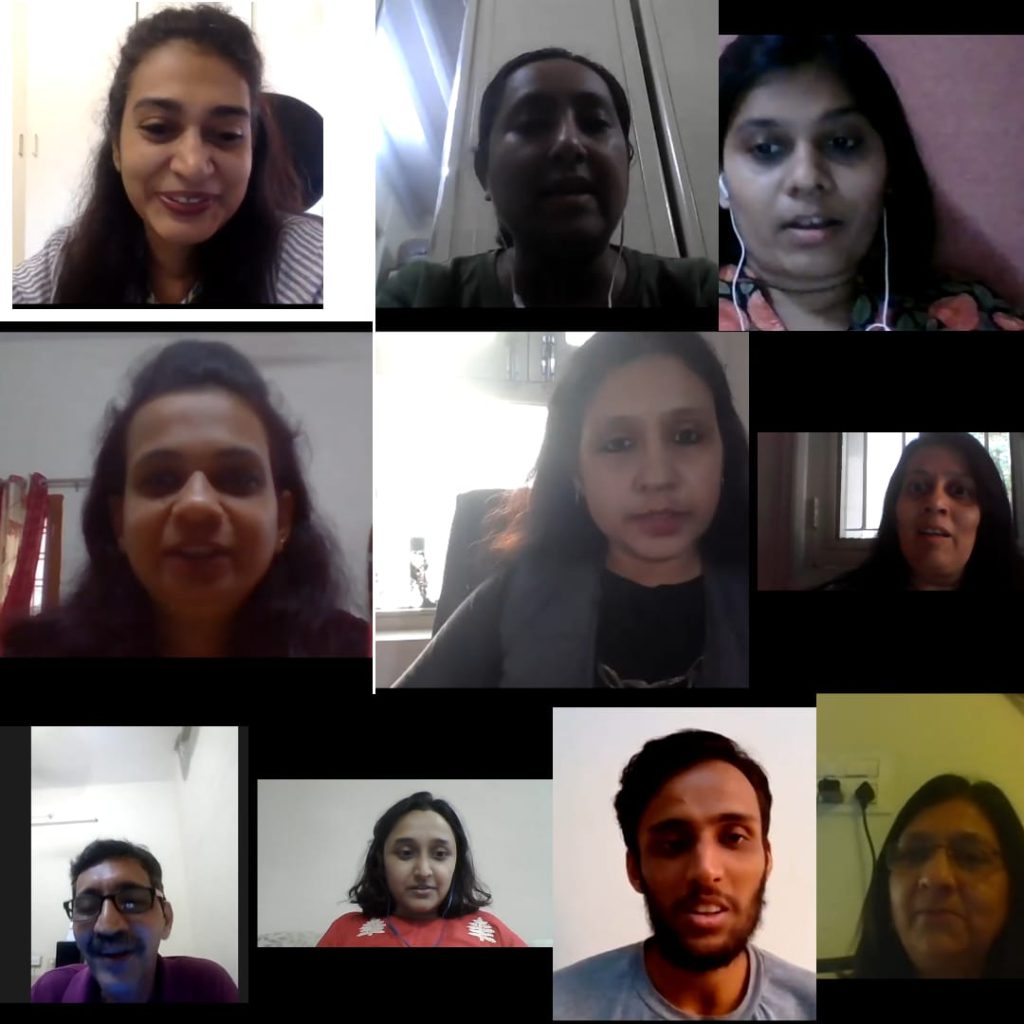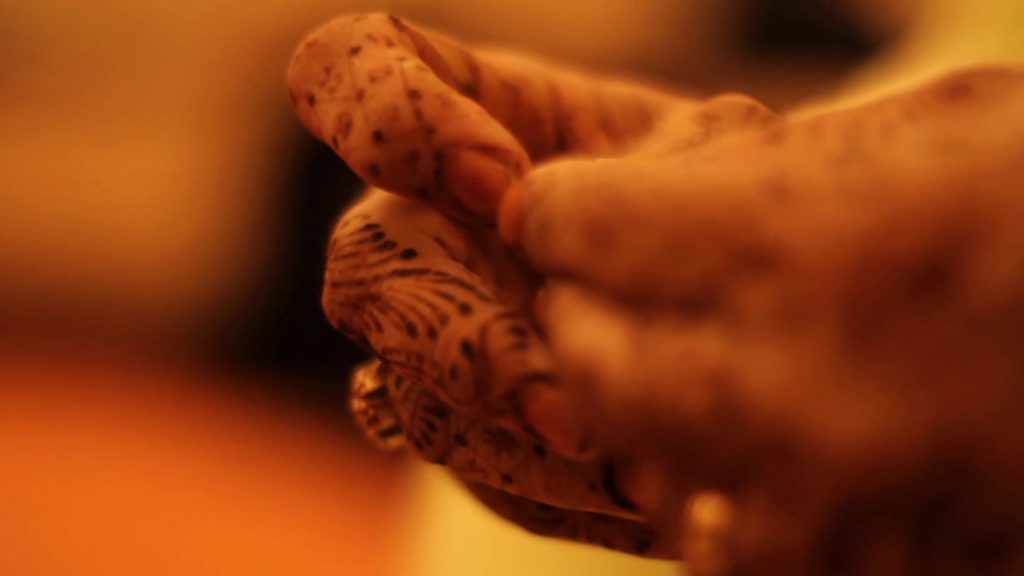Absence of female genital cutting laws in India: An issue that requires immediate action

By Richa Bhargava Age: 20 Country: India As a first year law student in Sonipat, India, I was exposed to the practice of female genital cutting (FGC) as a part of my sociology course. We discussed the practice briefly. The article that formed a majority of our discussion only spoke of the existence of FGC in African nations and made no mention of India or other countries around the world where women are subjected to the practice. I felt shocked and truly disturbed when I first learned about FGC, and as a result, my response was to read about it on my own accord. A little browsing led me to the discovery of the fact that FGC prevails in the Indian subcontinent as well. I read about the Bohra community, the absence of legislation and the organisations and people advocating to end this harmful and unnecessary practice. Laws do not just force and punish. They deter, discourage and dissuade, too. Enacting and legislating laws raises awareness and empowers communities to change not only what people do, but what they think is right. It is vital for laws to continuously evolve with the changing norms and ideals of a society. FGC is a prevalent practice among the Bohra community in India. A study indicated that almost 75% of the women of this community who were interviewed have been cut. At present, many citizens are unaware of its presence in India. Lifting the veil off this practice is an essential step toward ensuring that a conversation regarding its harmful effects on young girls begins. Maneka Gandhi, a union minister, stated that there is a lack of proof regarding the existence of FGC in India, and there is no data to support its presence. The Ministry of Women and Child Development needs to conduct surveys and take appropriate measures to find all data that would make the legislators see the need for the enactment of a law against FGC. To avoid addressing the issue is to completely ignore its existence. A similar approach has been taken up by the Indian government over the years. Multiple accounts of women who have undergone FGC are out in the public domain and provide substantial evidence to prove the presence of khatna, as it is known in the Bohra community. Yet, no legislation or statute has been formulated or enacted in India which would help survivors find an easy legal recourse. There is an imperative need to move beyond the pretext of not having enough data to prove FGC occurs in India. Hundreds of survivors have spoken up against this practice and have openly shared their painful accounts. Many survivors have shared that since khatna is secretive, making it unlawful could have a serious impact in curtailing it. According to Section 320 and Section 322 of the Indian Penal Code, causing grievous hurt to another person is a criminal offence, and FGC would automatically fall within its purview. Despite this, there has been no effort on the part of the legislators to specifically provide remedy to survivors. The Indian Constitution guarantees the fundamental right to life and liberty to all its citizens. Legal statutes like the Indian Penal Code and the Prevention of Children from Sexual Offences (POCSO) Act that penalise crimes should mention terms such as female genital mutilation/cutting, labia minora, etc., to provide appropriate legal recourse to women affected by this practice. India claims to be a welfare state that ensures the well-being of all its citizens. Refusing to ensure the safety of young girls who might be subjected to FGC is a contradictory act. Various jurists and legislators face the problem of deciding whether one fundamental right should be given more importance than the other. The proposed ban on khatna raises a similar obstacle. The Indian Constitution confers upon its citizens the right to equality, as well as the right to practice and profess any religion. There exists a constant clash between articles 14 and 15 defining right to equality and articles 25 and 26 defining religious rights. In particular, the rights guaranteed to people under article 26 pose a unique challenge before the courts. In recent years, courts have come to realise that the right to equality should be awarded more weight. Discrimination solely on the basis of one’s gender is highly dishonourable and unjust. In order to move forward, a distinction between social malpractices and actual religious practices needs to be made. Social norms disguised as religious practices infringing upon the rights of women need to be done away with. The right and autonomy over one’s body is crucial to live a respectful life. People frequently wonder whether legislation can bring about change. Fear that criminalising FGC might result in a deeper continuation of it is felt by many and is a valid concern. However, often the notion that a new law can elevate conversation on FGC and create a discourse for all to engage in on the topic is overlooked. The existence and continuity of khatna cannot just be attributed to the fault of a community. With democratic ideals such as equality and freedom, the state cannot shy away from establishing and constituting laws that are in symmetry with these ideals.
Understanding female genital mutilation/cutting: An ally’s call for action

By: Farhanaz Hazari Age: 18 My fight against female genital mutilation/cutting (FGM/C) can be traced back to the day my mother and sister had a discussion with me on how young girls from the age of 7 are subjected to FGM/C or khatna, as it is known in the Bohra community. They explained it in simple terms, as I was still in school and unfamiliar with the practice, and guided me on how to approach the subject. They educated me on who conducts this act and where it is conducted and for what reasons. They told me that it was taboo to talk about it freely and also to never ask if anyone had been subjected to khatna. After hearing this from two people that are close to my heart, I trusted their word and never asked anyone about it. I had no idea little girls were subjected to such pain and trauma. They are children, after all. Aren’t they supposed to play with dolls and fight for the window seat on the bus ride home? Why are people insisting on controlling girls from such a young age? Why are they putting them through this mental trauma? Why isn’t anyone speaking up against it? All these questions were flooding my mind and all I wanted was someone to tell me this isn’t happening anymore. To think I was hurt and frustrated would be an understatement. I was angry and sad at the same time. I thought this is a tradition that had been shunned and looked down upon by many communities around the world. But to my misery that was not the reality. The next time I came across the word khatna in one of the books in The Princess Trilogy by Jean Sasson, it brought me to tears. At that point I knew I had to do something to raise awareness against it or simply make it known to people that it is a violation of a girl’s body. I read up about female genital mutilation/cutting and learned about how its roots were traced back to Egypt. I learned about the four types and how there is no scientific evidence to help women medically in any way. Being a student of law, I have the opportunity to speak up and back my reasoning with legal knowledge. FGM/C infringes upon the girl child’s human rights, such as the right to bodily autonomy, equality, right to life and personal liberty, which includes the right to be free from any form of violence. After the young girls are cut, they may die, or bleed continuously and/or develop an infection, which violates their right to have a healthy life under Article 21 of the Constitution of India. Justice Chandrachud also stated, “One has supreme authority over genitalia. It is central to one’s identity, dignity and autonomy.” The recognition of the harms of FGM/C is increasing day by day as many are filing petitions, raising their voices and sharing their stories with the help of nongovernmental organizations. I have the opportunity to voice my thoughts against the practice with the help of Sahiyo, and for that I am eternally grateful. The Pakistani activist Malala Yousafzai said, “There’s a moment when you have to choose whether to be silent or to stand up.” I say stand up. Raise your voice and help put an end to FGM/C.
My experience of learning about female genital cutting: An outsider’s perspective

By Madrisha Debnath Not belonging to a community where female genital cutting (FGC) is practiced, I have often faced questions on how I can understand how the practice could occur if I am an outsider and the religion or culture I grew up in never condoned it. Interestingly, those who have questioned me have been peers at my university, who also did not come from FGC-practicing communities. But, each of us have grown up in a certain cultural community that has performed certain traditions or norms for generations. In other words, the societies we live in have constructed certain social norms and practices that are followed by its members to keep it going. Therefore, understanding this perspective, one can relate to the practice of FGC according to their own social position and be reflexive in terms of their subjectivity. When I first learned about female genital cutting, I was shocked by the physical pain a child undergoes to fit into the heterosexual matrix regulated by the institution of marriage. Not knowing anything about the practice or having experienced it, but being a female with a clitoris, I could not bear the distress of understanding how painful it must be to be cut at the site of more than 8,000 sensory nerve endings. I kept on watching and re-watching documentaries, the narratives on FGC, and listening to survivors’ stories. The more I listened to their stories in an attempt to understand the social process, the more I felt the survivors’ trauma. I tried to understand the agency of the women, particularly the role of a mother or grandmother taking part in the very system that regulated their own body. Why is it that the mother, the one who could possibly be the most sympathetic toward the child, could subject her daughter’s body to FGC? According to the stories of the survivors, even in cases when the memory of the cut may be repressed, the “body memory” can remember the pain. The effect of the trauma may be repeated every month as the girl hits puberty, during intimacy, and again potentially through her future daughter’s experience with FGC. The first thing I could relate to culturally from my own social construct was how the institution of marriage itself works. In my opinion, marriage is actually a relation from a man (the father) to another man (the husband), whereby the woman is transferred as the symbol of lineage. When the occasion of marriage takes place, generally a change in location takes place for the woman, as her guardianship is being transferred. I recently attended my brother’s wedding in India whereby the next morning my sister-in-law had to leave her house and come to our place of residence. Although belonging from the groom’s side, I was supposed to be rejoicing and welcoming my new sister-in-law. But I couldn’t hold my tears as the bride left her family. Being a girl, I could not withstand the final moments of my sister-in-law departing from her mother. The bride and her mother burst into tears. The ritual of Kanyadaan, or giving away the female child with the virtue of generosity and charity, performed by the father of the bride to her husband, ensures her transfer from her father’s family to her husband’s family as a symbol of lineage. Before leaving her father’s family the daughter performs kanakanjali, which involves paying off her mother’s debt. But is it possible to pay off a mother’s debt? The mother, who had once undergone the same rituals and practices, may have once felt the pain of leaving her family aside, but now it is her daughter who has to undergo the same practices. How can the mother hold her tears? She had to once leave her family and now her daughter is undergoing the same practice. There have also been counter spaces of resistances within the communities against these norms. For example, in my community now, female priestesses are challenging the perception that a priest could only be someone who is male since the female body was not considered to be “pious” for performing rituals because of the taboo of menstruation associated with them. Challenging this perception, the female priestesses are performing marriage rituals without the norm of kanyadan. The women are advocating marriage to be a union between two equals and that one cannot be given away as a gift to another. The rituals that are being performed by the female priestess simply denote the union of two families, where the bride is not considered as a “gift” since she is not a commodity which can be simply given away. Drawing a parallel between the norm of marriage and the transference of guardianship of the woman from the cultural institution I belong to, to that of how FGC can continue is how I can understand how rituals or practices can continue generation after generation. We perform them because they have been performed by others before us in our communities. The questions that I’m left with are whether there is actually any choice by the girl or woman herself to undergo the practices whether in the example of marriage I gave or by the girl who undergoes FGC? And in the case of FGC, is it the mother or the grandmother who chooses to facilitate the practice to be performed on their daughter, or is it the performative nature of tradition that keeps the practice going, being repeated and recited again and again?
Women should not be harmed because of societal norms

By Sakshi Rajani Age: 17 Country: India Female genital cutting (FGC): the term sounded ruthless the first time I heard it. It was not long ago that I was introduced to this term. While going through my Instagram feed, I read a story about a law student who was spreading awareness about FGC, and I was clueless about what it was. Immediately I searched this issue online and learned how serious it was. Then, I pondered why I hadn’t known about it earlier. Why had no one around me talked about it? Upon researching it further, I came to know how deeply rooted this problem was in communities and cultures. My will to do something to end it became stronger. I looked for organisations working to end FGC and came across Sahiyo. I soon joined the organisation. The first time I spoke about FGC to my friends they said, “What is that?” I wasn’t surprised by their reaction because I, too, was unfamiliar with it. I asked them to research it on their own, and then I explained more about the harms. I told them the World Health Organization and the United Nations declared FGC a human rights violation. Then I introduced them to the groundbreaking Mumkin app created by two co-founders of Sahiyo, Priya Goswami and Aarefa Johari, where my friends could learn more valuable information about this issue. What are the hurdles in encouraging abandonment of or ending FGC? FGC is also often seen as a necessary ritual for initiation into womanhood and can be linked to cultural ideals of femininity, purity and modesty. A strong incentive to continue the practice is family pressure to adhere to conventional social norms. Women who break from this social norm can face condemnation, abuse and rejection from family or community members. Patriarchal society can help perpetuate it generation after generation. Female genital cutting should stop immediately, as a woman should have full rights over her body and no woman should be harmed because of societal norms and expectations. I am now an advocate to make sure FGC ends.
Saved by a lie: A story of female genital cutting

By Zainab Khambata Age: 17 Place of residence: Mumbai, India My maternal grandmother prides herself on being the perfect blend of modernity and religion. But when it came to her own daughter who is my mother, in spite of her misgivings, she still fell in line and got my mother circumcised or cut. Ask my grandmother why she did it and the reasons are numerous. Her mother asked her to do it. She lived in a joint family and all the cousins were cut. She didn’t know how to openly defy social norms and say no. The oddly mystifying voice of reason: if everybody is doing it, maybe it is the right thing to do. That is how Bohri women still continue to be cut in this day and age by their mothers and aunts and grandmothers. My mother still remembers the day she was cut as a child very vividly. She wasn’t told anything at all, simply pounced upon by her aunts and a “maasi,” or auntie, who used a razor on her. Then she was asked to rest to let the bleeding stop, given a bar of chocolate, and as a bonus, no school the next day. Life went on for my mother as usual without any mention of the incident or what had transpired. All was good and forgotten until my paternal grandmother started hounding my mom to get me cut. It was this whole maahol, or social environment, where mothers of girls my age were more than happy to play reminder and ask if I was cut yet because they had already had their little girls cut. My mom read about it and realised the physical repercussions of it, the bleeding and scarring, emotional repercussions and trauma, and in some cases, even sexual frigidity. You may never really forget what happens to you even though you are not informed about it at all. Upon inquiry, my mom never got a satisfactory answer as to why girls are cut besides the fact that it’s Sunnat, or encouraged. Some moms said it was for hygiene purposes; others said it would keep a girls’ potentially “sinful” thoughts of a sexual nature at bay. But the final straw was when she was told it may heighten mental and physical intimacy between couples. She realised then that many people have a myriad of confusing reasons to justify cutting. When the pressure became too much from my grandmother and the other moms around her, my mother resorted to the only way she knew to keep me safe, by telling everyone that the deed was already done. My paternal grandmother, who was hell bent on getting me circumcised like all my cousins to uphold her own religious morals and beliefs, made it a point to cross-check with my maternal grandmother whether I was truly cut. My maternal grandmother was smart enough to say yes, mostly to atone to my mom and not let history repeat itself for the sake of my bodily autonomy. In this way, my paternal grandmother was satisfied and she let it rest once and for all. My mom had actually managed to prevent my cutting by telling everyone I had undergone the practice. Ingenious or devious? No matter what, I am grateful.
Thaal Pe Charcha: February 2020

On February 8th, as part of our International Zero Tolerance Day for FGM/C, Sahiyo hosted its first Thaal Pe Charcha (TPC) for 2020, with a special private screening of ‘A Girl from Mogadishu’, directed by Mary McGuckain. The film is a true story based on the testimony of Ifrah Ahmed, a Somalian whose suffering acted as catalyst for one of the world’s biggest and most successful movements to end gender-based violence and female genital cutting. The Sahiyo team and Thaal Pe Charcha participants were deeply moved by the film, and found resonance in Ifrah’s journey on fighting a practice deeply rooted in the culture and tradition of a community constantly seeking ways to establish their identity. ‘Thaal Pe Charcha’, in which a diverse group of participants gather around a meal, and encourage conversations about ending Khatna (FGC) within the community, is currently in its third year and is one of Sahiyo’s more successful ground activities, which provides a safe environment for sharing solutions and stories. Read about this ‘TPC’ through the lens of one participant in this thoughtful blog piece.
Virtual Thaal Pe Charcha goes pan India

Sahiyo held an online Thaal Pe Charcha (TPC), which loosely translates as “discussions over food,” on October 31st. TPC is a flagship Sahiyo program typically held in person, but was conducted online due to safety during the pandemic. The current COVID-19 situation may have restricted this TPC to a virtual interaction and taken away the joy of relishing traditional Bohra cuisine. However, participants were satiated with the conversations that unfolded over the 2-hour program, and as noted by one participant, provided enough food for thought to go around at this event. The program lead and Sahiyo co-founder, Insia Dariwala, successfully incorporated creative activities so that participants could connect and bond with each other. Over the last three years, TPC has seen a lot of growth, and this was the first ever TPC where participants joined in from various cities in India, including Mumbai, Ahmedabad, Hyderabad and Pune. The success of any program lies in its ability to create sustainability and leadership. This was remarkably displayed by one of Sahiyo’s volunteers, Jumana, who under the guidance of Dariwala and Chandni Shiyal, independently organised and hosted TPC from her residence in Ahmedabad. The camaraderie between the participants was commendable, and it was heartening to see total strangers holding space for each other, and bonding over the shared pain of female genital cutting (FGC). Some of these women had never shared their stories with anyone, and needless to say, it was a catharsis for many. Other discussions also included male versus female circumcision, its relevance, consent of the child, and also medicalization of FGC. The event ended with many expressing a desire to host TPC in their own hometowns, and creating more opportunities to continue discussions on this topic.
मैं किसके साथ सोती हूँ यह फैसला मेरा दिमाग करता है, मेरा ‘क्लिटोरिस’ नहीं

(This post was originally published in English on March 22, 2017. You can read the English version here.) लेखक: सबाहत जहाँ उम्र: 24देश: भारत मैं एक कैफे में बैठकर सोच रही हूँ, क्या मैं अपनी बेटी के साथ जननांग विकृति जैसी दर्दभरी प्रथा को निभाना चाहूँगी या नहीं, जैसा मेरी माँ ने मेरे साथ मज़हब के नाम पर किया था। मैं 24 साल की हूँ, पत्रकारिता की पढ़ाई कर रही हूँ, एक ऐसे समुदाय की मुस्लिम लड़की हूँ जो आज भी अंधे होकर महिला जननांग विकृति (Female Genital Mutilation – FGM) की प्रथा को ढो रहे हैं। पूरी जिंदगी मेरा भरोसा था कि FGM मेरे स्वास्थ्य के लिए अच्छा है, और कि जो भी पेशाब संबंधी दिक्कतें मुझे हो रही हैं उन सबका इससे कोई संबंध नहीं है। मुझे अहसास ही नहीं था कि मेरी सबसे बड़ी समस्या यह थी कि मेरा क्लिटोरिस सात साल की उम्र में काट दिया गया था। मुझे तो यह भी याद नहीं है कि यह कैसे हुआ था, या इसमें मुझे दर्द हुआ था या नहीं। और मुझे कभी सोचने का मौका नहीं मिला क्योंकि जब मेरी माँ ने कहा कि यह मेरे स्वास्थ्य के लिए अच्छा है तो मुझे उन पर भरोसा था। मैं उनको दोष नहीं देती हूँ लेकिन मैं प्रथा को दोषी मानती हूँ। बहुत से मुस्लिम फिरके इसे नहीं मानते हैं लेकिन मेरा समुदाय मानता है। पहली बार एफजीएम के बारे में मुझे तब पता चला जब मैंने लेखक अयान हिरसी अली की किताब पढ़ी। उसके बाद मैंने हिंदुस्तान टाइम्स में सहियो के बारे में पढ़ा था। मैं गहरे सदमे में थी और मैंने मेरी माँ को कॉल किया। शांत दिमाग से मैंने उनसे पूछा, “माँ, आपने मेरे साथ ऐसा क्यों किया?” उन्होंने कहा, “बेटा क्योंकि यह यौन उत्तेजनाओं को नियंत्रित करेगा, तुम संभोग के लिए आतुर नहीं रहोगी और तुम्हारा कुँआरापन बना रहेगा।” मैंने सोचा, यह सब कुँआरेपन के लिए है! क्या इसीलिए मुझे समय-समय पर पेशाब संबंधी दिक्कतों से जूझना पड़ता है? किसी के साथ सोना है या नहीं यह मेरा मामला है, मेरी इच्छा है। यह मेरा दिमाग है जो इसका फैसला लेगा, मेरा क्लिटोरिस नहीं! मेरे पास अपनी माँ से कहने के लिए कुछ नहीं था, मैंने बस कहा “ठीक है” और कॉल को काट दिया। मुझे उनके ऊपर गुस्सा नहीं है, उन्होंने तो वह किया जो उनकी संस्कृति और मज़हब ने सिखाया था। हाँ, शारिरीक सम्बन्ध के दौरान मुझे दिक्कतें होती हैं। यह दर्दभरा है और यह समस्या भरा है। इस प्रथा से मेरी यौन उत्तेजना नहीं रूकी बल्कि इसने मेरे लिए शारीरिक संबंध को मुश्किल बना दिया। मैं एक पढ़ी-लिखी महिला हूँ और मैं FGM के खिलाफ खड़ी हो रही हूँ। लोगों को अहसास कराने के लिए कि यह गलत है, मैं हर मुमकिन कोशिश करूँगी। साथ खड़े होने और इस बारे में बात करने के लिए मैं सहियो को धन्यवाद देती हूँ। मुझे खुशी है कि इस बारे में बात करने को लेकर जो शर्म का माहौल था वो खत्म हो गया है और मैं एक FGM पीड़ित के रूप में अपना दुख साझा कर सकती हूँ। (इस पोस्ट का लेख मूल रूप से 23 फरवरी, 2017 को इस ब्लॉग पर छपा था: Wanderlustbeau)
Is legal action against female genital cutting enough to end the practice?

Understanding the impact of a Sahiyo co-founder’s documentary film, A Pinch of Skin, in India by Priya Goswami In September 2018, the Indian Supreme Court referred a Public Interest Litigation (PIL) on the prevalence of female genital cutting (FGC) in India to a five-judge constitution bench. My documentary film, A Pinch of Skin, was quoted as evidence by the Supreme Court of India to establish the prevalence of the practice. As the filmmaker, I was overjoyed with what my film had managed to do and become – the first audio visual evidence on the practice of FGC in India. There is no law in India against FGC. The PIL had been filed in 2017 by a Delhi-based lawyer seeking a ban on the practice of FGC in India. While other survivors of the practice joined in the petition against FGC, they were opposed by a counter-petition filed by a pro-FGC group within the Dawoodi Bohra community. That group claimed that FGC is not harmful and should be considered a part of their constitutional right to religious freedom. Accordingly, they demanded that the practice be scrutinized through this lens by a larger constitution bench of the court – an appeal that the court finally granted. With that said, a small part of me shrank hearing the news. I had intended the film to create debate around the subject and while legal reform may be one way of bringing about change, it will never be the mainstay for long term change. As an activist on the ground, I understand change requires sustained conversation. A law against the practice of FGC may become a mandate, but may also end up hindering the progress made by activists on creating a room for dialogue by years. “I had intended the film to create debate around the subject and while legal reform may be one way of bringing about change, it will never be the mainstay for long term change.” A broad evidence base for this is how some Dawoodi Bohra community members in the United States (U.S.) and Australia have hushed the practice, pushing it further underground, as the community members were charged in both countries with practicing FGC, or khatna as it is known in the Bohra community, and publicly spoke about it in the media. A federal judge dismissed all of the FGC-related charges in the U.S. case; whereas Australia’s High Court ruled all forms of FGC are illegal. While the cases against the community members in the U.S. and Australia have opened up the dialogue on the issue and more survivors have come forward, it has also instilled fear in the minds of some community members. This has, in turn, supported the movement toward medicalization of khatna, which is an equally dangerous trend. As an activist and a communication designer, I ask myself often – is pushing people to abandon the practice because the law says so ever a complete solution? Nine years ago, if you would have asked me what my goal with A Pinch of Skin was, I would have said to convince people to abandon the practice. Today, I say the same, except with the awareness that change requires time and persistent and effective communication, which involves the community from within. Key points to understand the situation in India: The conversation of female genital cutting in Asian communities is a relatively new one, as it is still largely believed to be an African problem. The subject was brought to public attention in India as an anonymous petition under the pseudonym ‘Tasleem’ was launched in 2011 or 2012. This was followed by media attention to A Pinch of Skin in 2013. In 2015, two collectives were formed to speak about the subject: Sahiyo and WeSpeakOut, both being the only organizations worldwide working on the subject of khatna prevalent in the Dawoodi Bohra community. In 2017, the two organizations, Sahiyo and WeSpeakOut, were invited by the National Commission of Women and Child Development to speak with Menaka Gandhi. The Indian government, after gathering first-hand evidence from survivors (also the co-founders of the two organizations), did a u-turn denying the evidence against the practice until this landmark judgment by the Supreme Court. Read this detailed report. The Dawoodi Bohra Women for Religious Freedom continue to discount efforts against FGC under the umbrella of religious freedom. Following the PIL, the Supreme Court of India ruled that FGC could be charged under The POCSO Act.
Sahiyo India needs a part-time Communications Associate

Sahiyo India is looking for a Communications Associate to support various programs, projects and public communications. In this role, you should be an excellent communicator with strong attention to detail. Creating social media campaigns, editing and writing Sahiyo materials and grant based writing will be an important part of your job. If you also have administrative and social media marketing experience, we’d like to meet you. This is a part-time position ideal for a young professional located anywhere in India. We are looking for someone proactive, who is willing to work independently and remotely, for up to 20 hours a month. This is a great opportunity for you to work with the founders of an internationally-recognised organisation, and learn how organisations develop from the ground up. Job duration: September 2020 – November 2020 (with the potential to extend further) Responsibilities & Duties: Facilitate internal and public communications Assist in developing programme/campaign plans and strategies and drive them. Draft and edit communications (e.g. reports, social media posts, press releases) Assist in maintaining web content and executing social media strategies for Sahiyo India Support the administrative manager with logistical coordination of Sahiyo programmes and events as needed. Support Sahiyo India Co-founders in creating and executing campaigns Requirements: Understanding of media relations and digital media/campaign strategies Proficiency in Google Docs, MS Office; familiarity with design software (e.g. Canva, Photoshop, InDesign) and content management systems is a bonus, Experience with Excel and data manipulation is a bonus Solid editing and researching skills Excellent communication abilities (oral and written) Ability to multitask on different projects Strong attention to detail Organizational skills Desired Qualities: Experience working in the field of gender-based violence, FGM/C, or related field. Sensitivity towards different cultures To Apply: Please send a resume and cover letter to Priya Goswami at priya@sahiyo.com no later than Tuesday, August 28, 2020. The email subject line should state “Application: Communications Associate”. About Sahiyo SAHIYO, an award winning, transnational, organization is dedicated to empowering Asian communities to end female genital cutting (FGC) and create positive social change through dialogue, education and collaboration based on community involvement. By working towards an FGC-free world, we aim to recognize and emphasize the values of consent and a child’s/woman’s right over her own body. We aim to enable a culture in which female sexuality is not feared or suppressed but embraced as normal. For more read, about Sahiyo’s storytelling and our history.
